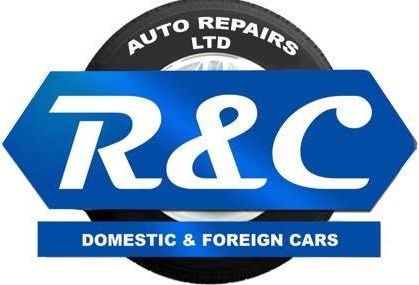Belts and hoses are like the unsung hero of your engine’s team. They might not be the star of the show, but if something goes wrong with them, your engine won’t run. These parts don’t often offer direct signs something is wrong, so it’s important to perform visual checks, listen for unusual sounds, and have your belts and hoses inspected at the manufacturer’s suggested service intervals. If you notice any of these symptoms, bring your car to R&C Auto Repairs – Weir Mill, Chestergate, SK3 0AG Stockport, where our professional R&C technicians can properly diagnose your vehicle and get you back on the road safely.
Belts & Hoses Warning Signs
Hoses:
There are several types of hoses your vehicle’s engine needs to run properly.
Top radiator hose:
carries engine coolant to the radiator for temperature reduction of coolant
Bottom radiator hose:
returns the cooled fluid to the water pump and on throughout the engine
Bypass hose:
carries cold fluid from the water pump past the thermostat for faster engine warm-up and helps maintain constant engine temperature
Heater hose:
circulates hot coolant to and from the passenger compartment heating system
Look for:
cracked or broken hoses, hardened or lost flexibility, bulged or swollen hoses, or signs of leaks are present.
Belts:
V-Belts or Serpentine Belt:
Your car’s accessories are controlled by either a series of v-belts, or one serpentine belt that winds around your engine. These belts power your alternator, water pump, power steering and cooling fans, so if a belt were to degrade and snap, it would mean a breakdown and costly repairs. That’s why it is a wise idea to replace these belts at OE scheduled maintenance intervals.
Look for:
cracks or splits in the belts; greasy or glazed look; excessive cracks; splits or chunking; or if the belt is exhibiting edge damage and/or wear.
Listen for:
signs of impending belt failure including a squealing noise when the car accelerates. This could mean the belt is slipping and not efficiently turning the drive accessories. The belt tensioner also could be worn and in need of immediate replacement.
Timing Belts:
The timing belt in your car’s engine is a toothed or ribbed belt that is the sole component that keeps the camshaft(s) and crankshaft in sync. A failed timing belt can cause extensive and expensive engine damage, that’s why it’s important to replace it at OE scheduled intervals. Similar to other belts, your timing belt will degrade with time and usage.
Look for:
worn or sheared teeth; worn lands between the teeth; the back of the belt is cracked or worn; a damaged or worn edge; difficulty starting your car; and grease or oil contamination.
Listen for:
a high pitched shrieking or whirring sound, especially when the engine starts. This noise may also be heard while the engine is idling.
Belt Tensioners:
A belt tensioner is a pulley that maintains the constant belt tension and torque required to drive a vehicle’s multiple accessories. It’s imperative to ensure these belts are doing their job and keeping the belts they support in the proper place to prevent more damage to your engine.
Look for:
A belt tensioner is a pulley that maintains the constant belt tension and torque required to drive a vehicle’s multiple accessories. It’s imperative to ensure these belts are doing their job and keeping the belts they support in the proper place to prevent more damage to your engine.
Listen for:
A squealing or rattling coming from the timing cover area
R&C Auto Repairs Team
07809153730 sau 01616376550
Unit 6B ,Weir Mill Chastergate ,Stockport ,SK30 AG
Facebook page : http://www.facebook.com/rautosk/
